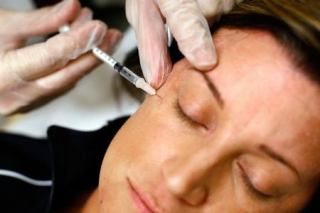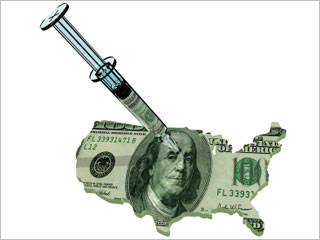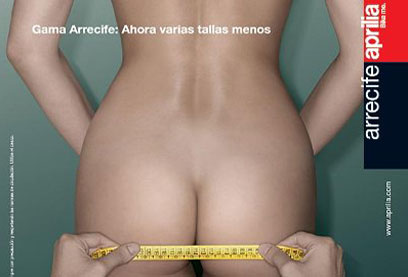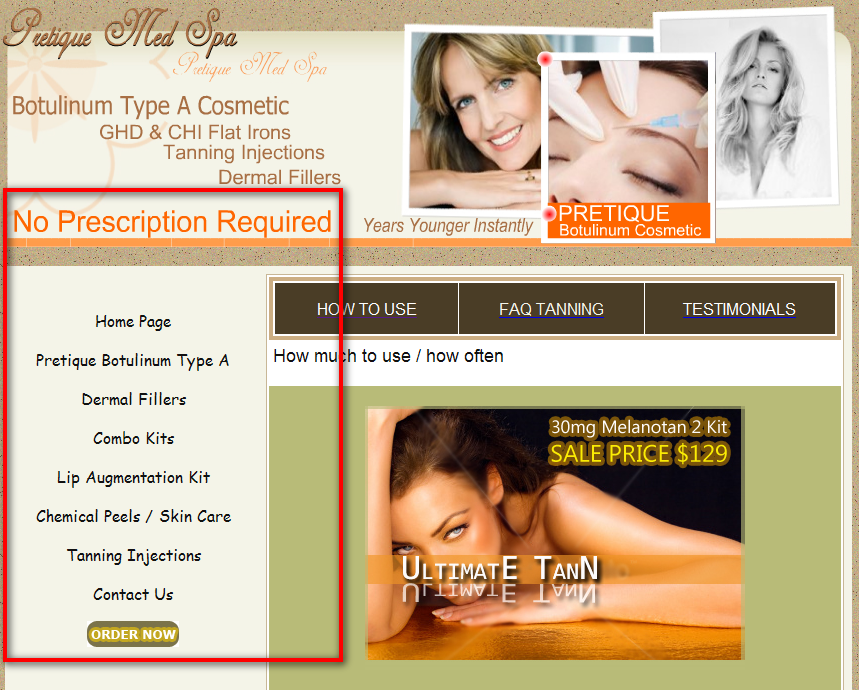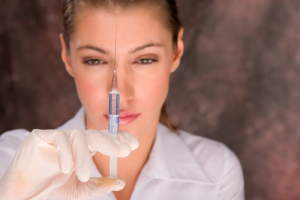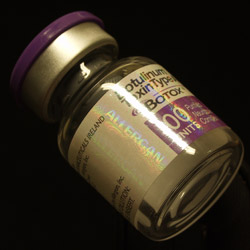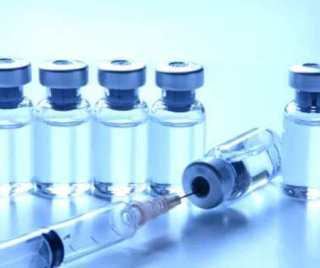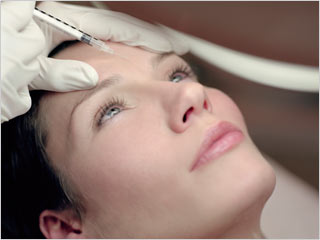First quarter sales increased year-over-year 11.2% in dollars and 6.9% in local currencies, boosted by the strong pickup in the sales of medical devices, which grew 18.4% in dollars and 13.4% in local currencies. The growth in the Medical Aesthetics businesses was even stronger outside the U.S. in all regions and across a wide range of countries, with surprisingly strong performance in Europe.
Operating performance was strong, with non-GAAP earnings per share at $0.65, marking an increase of 18.2% versus the result for Q1 of 2009, and comfortably exceeding the Q1 expectations shared with you, the investment community, of $0.57 to $0.59.
Earnings growth was driven by strong gross margin expansion, especially in the Medical Device segment. Careful spending in the selling, general administrative area, whilst we increased investment in R&D by 11.1% on a non-GAAP.
Within SG&A, we however doubled our DTC expenditures versus Q1 of 2009, which of course was the low watermark for spending when the world economy was in crisis. Our plan is to continue to invest in 2010 across our brands and into the recovery of our markets.
During the quarter, we were pleased that we continued to strengthen our R&D pipeline, supplementing our internally development programs with acquisitions and licenses. In January, we acquired Serica, a company with proprietary technology for use in tissue regeneration especially applicable to breast reconstruction, as well as the license for Ser-120 in Phase III clinical development for nocturia. Strategically, we have made good progress in building up a portfolio of urology assets.
We also furthered our aspirations to be the leader in medical aesthetics also in Asia, by reacquiring the rights to BOTOX Cosmetic in Japan and China and expanded our footprint in fast-growing emerging markets by establishing direct operations for all of our businesses in Turkey, effective from the second quarter.
After the out-licensing transaction with Bristol-Myers for neuropathic pain, we've increased our degree of R&D focus on our core specialty areas.
Now I’d like to comment on our expectations for 2010. For the full year earnings outlook, we have brought up the bottom of the EPS range by $0.02 to $3.11 and have left the top end of the range at $3.15 which at the time of the last earnings call expressly excluded the costs of any healthcare reform bill in the United States. With the increase of the Medicaid rebate, extension to managed Medicaid and expansion of eligible hospitals in the so-called 340B program, we estimate that the cost of healthcare reform in 2010 will be approximately $12 million. This is now included in our outlook.
Turning to BOTOX
Sales growth has picked up relative to trends seen across 2009, with growth versus the first quarter of 2009 at 11.3% in dollars and at 6.6% in local currencies. Sales of $331 million were only modestly lower sequentially than Q4, which is always seasonally the highest quarter of the year. Most of this increase was due to the more economically sensitive aesthetic side of the business, as the benefits of the upper-limb spasticity FDA approval in March occurred too late in the quarter to contribute to our sales results.
Outside the U.S., we enjoyed very strong double-digit increases across a wide range of countries, with surprisingly strong growth in several of the main European markets. These global markets are precisely where we are successfully dealing with multiple competitors.
It would therefore seem that the market is recovering as we can measure our market share with only a short time lag. In Europe, on the aesthetic side, we’re holding share at just under 80%, as we deal with the incursions of both Merck’s, with their Zymine and Bocatua [ph] brands and Galderma with Azzalure.
On the therapeutic side, it seems that most of ZMM’s market share gains have been at the expense of Dysport. In the U.S., BOTOX sales growth is less buoyant, as there was no base of Dysport sales in the prior year, but it is clear that the market is growing again.
We estimate that in the aesthetic market, Dysport had somewhere between 13% and 14% share in the first quarter. We'll be curious to see the lasting impact of the Dysport Love It or Leave It promotion after it terminates at the end of May.
In the therapeutic market, Dysport’s share is so far negligible, given the long history and experience of BOTOX use. In Europe and the U.S., we have recently introduced a 200-unit vial, which is useful for injectors treating large muscle groups, as well as for differentiation from competition. Regarding global market share for the fourth quarter, the last quarter for which data is available, we estimate that BOTOX held 79% share in a market growing 13% year-over-year.
Regarding the clinical program for BOTOX for chronic migraine, the clinical trial results of our PREEMPT program were published in Cephalalgia, the journal of the International Headache Society. Regarding facial aesthetics, we've experienced an even stronger rebound in sales than observed with BOTOX. Dermal filler sales grew year-over-year, a very strong 42.4% in dollars, and 34.5% in local currencies, with great growth in all operating regions of the world, with Europe again surprising on the upside.
Juvederm & Juvederm Ultra XC
In the U.S., we've seen huge growth in the JUVÉDERM line since the launch of JUVÉDERM Ultra XC, this is the lidocaine-containing product, in early February. Although we have gained some market share, it would seem that the market is responding strongly to the reduction in treatment pain experienced with this lidocaine-containing product and already a substantial share of the mix is attributable to JUVÉDERM Ultra XC.
We have just initiated print advertising for JUVÉDERM XC and have a PR campaign with TV host Dayna Devon, as our spokesperson to further drive growth. In Europe, we launched new additions to the JUVÉDERM product line, JUVÉDERM Smile at the IMCAS Conference in Paris in January and JUVÉDERM Hydrate at the Anti-Aging Conference in Monaco in March. JUVÉDERM Smile was also approved in South Africa, JUVÉDERM XC in Korea and JUVÉDERM Ultra Plus in Taiwan.
Voluma was recently launched in Brazil and also approved in Taiwan.
Based on our analysis of the world market in Q4, which we estimate grew 12%, it is clear that global market growth has accelerated since then. Our analysis also points to JUVÉDERM market share gains in all regions of the world. Beyond superior product performance characteristics, Allergan also benefits from having full product line.
At the end of the first quarter, Allergan's cash and cash net of debt positions totaled approximately $2 billion and $471 million, respectively. Allergan continued to maintain exceptional cash flow generation capabilities in the first quarter, with operating cash flow after capital expenditures of approximately $161 million, an increase of approximately $56 million over the first quarter of 2009.
 Sounds like Allergan may have been getting a little greedy and got busted....
Sounds like Allergan may have been getting a little greedy and got busted....
